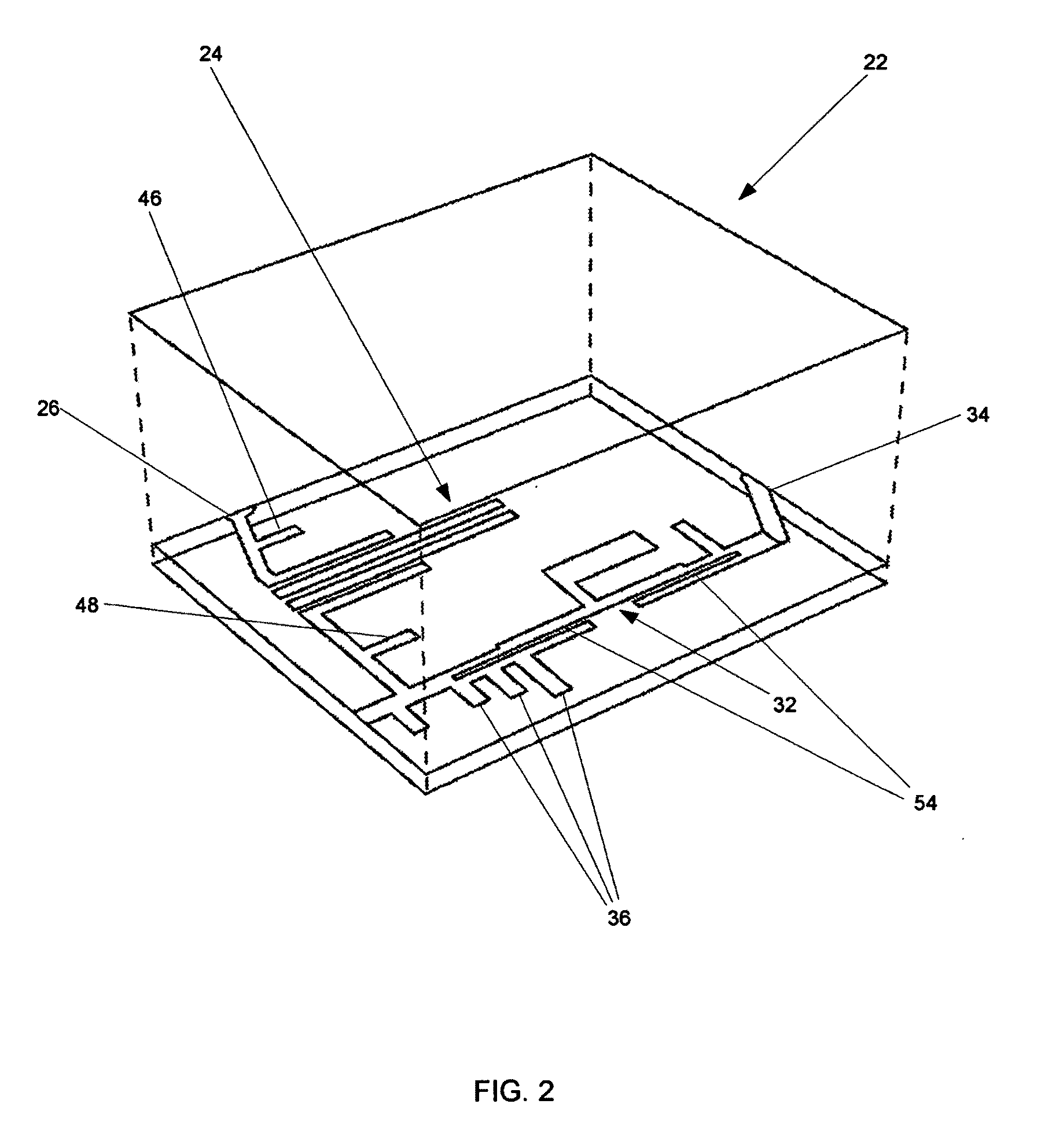Ku-band diplexer
a satellite transceiver and diplexer technology, applied in the field of transceivers, can solve the problems of inability to address the electromagnetic compatibility (emc) issue, conventional diplexer topology does not provide the additional out of band rejection necessary to meet these requirements, and insertion loss limitations that affect transmit power, noise figure, gain, etc., to achieve the optimum out of band rejection and insertion loss characteristics, reduce the size of the material, and reduce the effect of loss
- Summary
- Abstract
- Description
- Claims
- Application Information
AI Technical Summary
Benefits of technology
Problems solved by technology
Method used
Image
Examples
Embodiment Construction
[0020]The word “exemplary” is used herein to mean “serving as an example, instance, or illustration.” Any embodiment described herein as “exemplary” is not necessarily to be construed as preferred or advantageous over other embodiments.
[0021]An exemplary embodiment of the present invention is shown in FIG. 2. Diplexer 22 comprises an edge coupled band pass filter 24 on receive side 26 using additional open circuit stubs or input tapped line 46 and output tapped line 48 for the receive band combined with a dual spur line band stop filter 32 on transmit side 34. Spur line filter 32 is created by placing slots 54 in the transmission line. The embodiment also uses open stubs 36 in combination with spur line filter 32 to maximize the second harmonic suppression. Although three open stubs 36 are shown in FIG. 2, the number of stubs can be modified or used depending on the bandwidth of the stop band. In the embodiment of FIG. 2, the number of stubs shown achieves a one (1) GHz stop band. T...
PUM
| Property | Measurement | Unit |
|---|---|---|
| Frequency | aaaaa | aaaaa |
| Frequency | aaaaa | aaaaa |
| Frequency | aaaaa | aaaaa |
Abstract
Description
Claims
Application Information
 Login to View More
Login to View More - R&D
- Intellectual Property
- Life Sciences
- Materials
- Tech Scout
- Unparalleled Data Quality
- Higher Quality Content
- 60% Fewer Hallucinations
Browse by: Latest US Patents, China's latest patents, Technical Efficacy Thesaurus, Application Domain, Technology Topic, Popular Technical Reports.
© 2025 PatSnap. All rights reserved.Legal|Privacy policy|Modern Slavery Act Transparency Statement|Sitemap|About US| Contact US: help@patsnap.com



